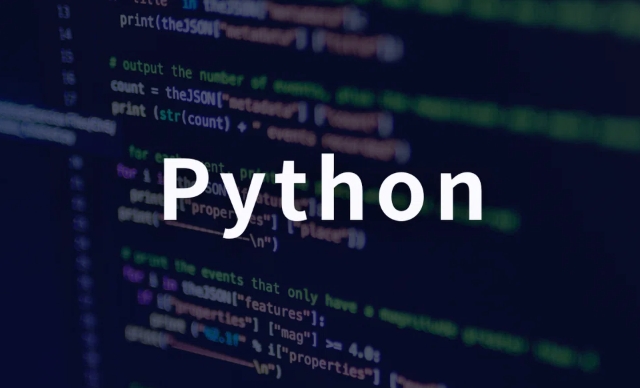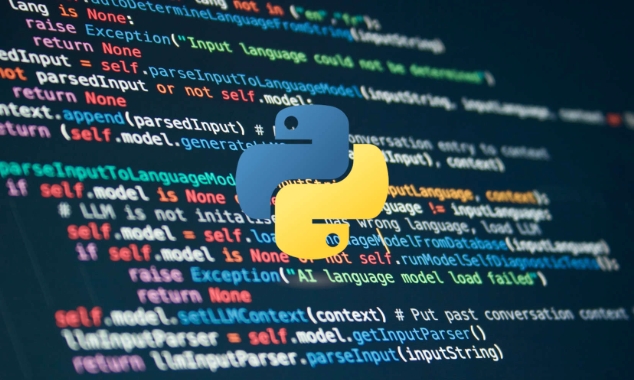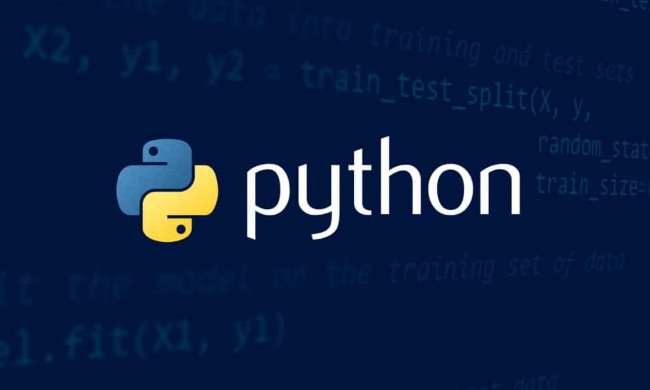Feature Engineering with Python
Jul 29, 2025 am 02:43 AMFeature engineering is a combination of data preprocessing and feature construction, with the goal of converting the original data into a form that is easier to understand in the model. Because the original data often contains problems such as noise, missing values, inconsistent formats, direct input to the model is not effective. Common operations include: 1. Missing value processing, such as filling with SimpleImputer or fillna(); 2. Category encoding, such as binary variable mapping to 0/1, and multiple categories use One-Hot or Target Encoding; 3. Standardization and normalization, such as StandardScaler or MinMaxScaler; 4. Box processing, such as age segmentation and income interval discrete. More meaningful feature structures need to be combined with business understanding, such as the construction of "how many days since the last purchase" and "the number of purchases in the past 30 days" in the e-commerce scenario, and are implemented through the datetime module, groupby(), and rolling(). After construction, you need to check the correlation to avoid redundancy and can use corr() or VIF to detect it. Recommended tools include Feature-engine, category_encoders, ColumnTransformer Pipeline to improve efficiency and maintainability. Feature engineering is a continuous iterative process that requires familiarity with the Python toolchain and maintaining sensitivity to data.

When doing feature engineering, many people think that this is a "metaphysical" job at first, but in fact it is a combination of data preprocessing and feature construction. As a mainstream tool, Python already has many mature libraries and methods in this area. The key is to understand the problem you want to solve and adjust the data according to the needs of the model.

Why do feature engineering first?
Machine learning models are not magic, they require inputs with clear structure and rich information. The original data often contains problems such as noise, missing values, inconsistent formats, etc., and the effect will not be good when feeding it directly to the model. The purpose of feature engineering is to turn the original data into a form that the model can better understand.
For example, if you have a timestamp field, it may be useless to throw it directly to the model, but if you extract information such as "day of the week" and "whether it is a holiday" from it, it may help predict sales or user behavior.

What are the common feature engineering operations?
This part is a practical operation step, and Python has ready-made methods to support:
- Missing value processing : You can use
SimpleImputerto fill in numerical missing, or usefillna()to fill it manually. Sometimes, missing itself is information, and it is not a bad idea to make a single marking column. - Category encoding : binary variables like gender can be directly mapped to 0/1, while multi-category like cities must consider One-Hot or Target Encoding.
- Standardization and normalization : Many models are sensitive to input ranges, so it is necessary to use
StandardScalerorMinMaxScaler. - Box processing : Sometimes continuous variable discretization makes it easier for the model to capture trends, such as age segmentation, income range, etc.
For example, if you read a DataFrame with Pandas, you can easily do One-Hot encoding through pd.get_dummies() , although you need to pay attention to the dimension explosion problem.

How to do more meaningful feature construction?
This part needs to be understood in combination with business, and cannot rely solely on code. For example, in the e-commerce scenario, in addition to the original purchase record, you can also construct features such as "how many days have you been in the last purchase", "number of purchases in the past 30 days", and "average order interval".
Python provides many conveniences in this regard, such as using the datetime module to deal with time difference, using groupby() to aggregate statistical indicators, and even using rolling() window function to act as dynamic features.
One thing that is easy to ignore is that after constructing new features, they must be checked to avoid introducing too much redundant information. You can use corr() to see it, or use VIF to detect multicollinearity.
Tool recommendation: Don't remake wheels
There are many auxiliary tools for feature engineering in the Python ecosystem, which can help you save a lot of trouble:
-
Feature-engine: This is a library that specializes in feature engineering, supports missing value interpolation, transformation, binning and other functions. The API style is similar to sklearn. -
category_encoders: More richer than sklearn's own encoder, including advanced methods such as LeaveOneOut and Target Encoding. -
ColumnTransformerPipelineofscikit-learn: It can unify multiple feature processing processes to improve reusability and maintainability.
For example, if you want to apply different processing methods to different columns, you can use ColumnTransformer to define a conversion pipeline and then stuff it into the Pipeline to run together.
Basically that's it. Feature engineering is not a one-time task, but a process of continuous iteration as model tuning. If you do it in Python, the key is to be familiar with the toolchain while maintaining sensitivity to data.
The above is the detailed content of Feature Engineering with Python. For more information, please follow other related articles on the PHP Chinese website!

Hot AI Tools

Undress AI Tool
Undress images for free

Undresser.AI Undress
AI-powered app for creating realistic nude photos

AI Clothes Remover
Online AI tool for removing clothes from photos.

Clothoff.io
AI clothes remover

Video Face Swap
Swap faces in any video effortlessly with our completely free AI face swap tool!

Hot Article

Hot Tools

Notepad++7.3.1
Easy-to-use and free code editor

SublimeText3 Chinese version
Chinese version, very easy to use

Zend Studio 13.0.1
Powerful PHP integrated development environment

Dreamweaver CS6
Visual web development tools

SublimeText3 Mac version
God-level code editing software (SublimeText3)

Hot Topics
 How to use PHP combined with AI to achieve text error correction PHP syntax detection and optimization
Jul 25, 2025 pm 08:57 PM
How to use PHP combined with AI to achieve text error correction PHP syntax detection and optimization
Jul 25, 2025 pm 08:57 PM
To realize text error correction and syntax optimization with AI, you need to follow the following steps: 1. Select a suitable AI model or API, such as Baidu, Tencent API or open source NLP library; 2. Call the API through PHP's curl or Guzzle and process the return results; 3. Display error correction information in the application and allow users to choose whether to adopt it; 4. Use php-l and PHP_CodeSniffer for syntax detection and code optimization; 5. Continuously collect feedback and update the model or rules to improve the effect. When choosing AIAPI, focus on evaluating accuracy, response speed, price and support for PHP. Code optimization should follow PSR specifications, use cache reasonably, avoid circular queries, review code regularly, and use X
 PHP calls AI intelligent voice assistant PHP voice interaction system construction
Jul 25, 2025 pm 08:45 PM
PHP calls AI intelligent voice assistant PHP voice interaction system construction
Jul 25, 2025 pm 08:45 PM
User voice input is captured and sent to the PHP backend through the MediaRecorder API of the front-end JavaScript; 2. PHP saves the audio as a temporary file and calls STTAPI (such as Google or Baidu voice recognition) to convert it into text; 3. PHP sends the text to an AI service (such as OpenAIGPT) to obtain intelligent reply; 4. PHP then calls TTSAPI (such as Baidu or Google voice synthesis) to convert the reply to a voice file; 5. PHP streams the voice file back to the front-end to play, completing interaction. The entire process is dominated by PHP to ensure seamless connection between all links.
 How to develop AI intelligent form system with PHP PHP intelligent form design and analysis
Jul 25, 2025 pm 05:54 PM
How to develop AI intelligent form system with PHP PHP intelligent form design and analysis
Jul 25, 2025 pm 05:54 PM
When choosing a suitable PHP framework, you need to consider comprehensively according to project needs: Laravel is suitable for rapid development and provides EloquentORM and Blade template engines, which are convenient for database operation and dynamic form rendering; Symfony is more flexible and suitable for complex systems; CodeIgniter is lightweight and suitable for simple applications with high performance requirements. 2. To ensure the accuracy of AI models, we need to start with high-quality data training, reasonable selection of evaluation indicators (such as accuracy, recall, F1 value), regular performance evaluation and model tuning, and ensure code quality through unit testing and integration testing, while continuously monitoring the input data to prevent data drift. 3. Many measures are required to protect user privacy: encrypt and store sensitive data (such as AES
 python seaborn jointplot example
Jul 26, 2025 am 08:11 AM
python seaborn jointplot example
Jul 26, 2025 am 08:11 AM
Use Seaborn's jointplot to quickly visualize the relationship and distribution between two variables; 2. The basic scatter plot is implemented by sns.jointplot(data=tips,x="total_bill",y="tip",kind="scatter"), the center is a scatter plot, and the histogram is displayed on the upper and lower and right sides; 3. Add regression lines and density information to a kind="reg", and combine marginal_kws to set the edge plot style; 4. When the data volume is large, it is recommended to use "hex"
 How to use PHP combined with AI to analyze video content PHP intelligent video tag generation
Jul 25, 2025 pm 06:15 PM
How to use PHP combined with AI to analyze video content PHP intelligent video tag generation
Jul 25, 2025 pm 06:15 PM
The core idea of PHP combining AI for video content analysis is to let PHP serve as the backend "glue", first upload video to cloud storage, and then call AI services (such as Google CloudVideoAI, etc.) for asynchronous analysis; 2. PHP parses the JSON results, extract people, objects, scenes, voice and other information to generate intelligent tags and store them in the database; 3. The advantage is to use PHP's mature web ecosystem to quickly integrate AI capabilities, which is suitable for projects with existing PHP systems to efficiently implement; 4. Common challenges include large file processing (directly transmitted to cloud storage with pre-signed URLs), asynchronous tasks (introducing message queues), cost control (on-demand analysis, budget monitoring) and result optimization (label standardization); 5. Smart tags significantly improve visual
 How to develop AI-based text summary with PHP Quick Refining Technology
Jul 25, 2025 pm 05:57 PM
How to develop AI-based text summary with PHP Quick Refining Technology
Jul 25, 2025 pm 05:57 PM
The core of PHP's development of AI text summary is to call external AI service APIs (such as OpenAI, HuggingFace) as a coordinator to realize text preprocessing, API requests, response analysis and result display; 2. The limitation is that the computing performance is weak and the AI ecosystem is weak. The response strategy is to leverage APIs, service decoupling and asynchronous processing; 3. Model selection needs to weigh summary quality, cost, delay, concurrency, data privacy, and abstract models such as GPT or BART/T5 are recommended; 4. Performance optimization includes cache, asynchronous queues, batch processing and nearby area selection. Error processing needs to cover current limit retry, network timeout, key security, input verification and logging to ensure the stable and efficient operation of the system.
 PHP integrated AI emotional computing technology PHP user feedback intelligent analysis
Jul 25, 2025 pm 06:54 PM
PHP integrated AI emotional computing technology PHP user feedback intelligent analysis
Jul 25, 2025 pm 06:54 PM
To integrate AI sentiment computing technology into PHP applications, the core is to use cloud services AIAPI (such as Google, AWS, and Azure) for sentiment analysis, send text through HTTP requests and parse returned JSON results, and store emotional data into the database, thereby realizing automated processing and data insights of user feedback. The specific steps include: 1. Select a suitable AI sentiment analysis API, considering accuracy, cost, language support and integration complexity; 2. Use Guzzle or curl to send requests, store sentiment scores, labels, and intensity information; 3. Build a visual dashboard to support priority sorting, trend analysis, product iteration direction and user segmentation; 4. Respond to technical challenges, such as API call restrictions and numbers
 python list to string conversion example
Jul 26, 2025 am 08:00 AM
python list to string conversion example
Jul 26, 2025 am 08:00 AM
String lists can be merged with join() method, such as ''.join(words) to get "HelloworldfromPython"; 2. Number lists must be converted to strings with map(str, numbers) or [str(x)forxinnumbers] before joining; 3. Any type list can be directly converted to strings with brackets and quotes, suitable for debugging; 4. Custom formats can be implemented by generator expressions combined with join(), such as '|'.join(f"[{item}]"foriteminitems) output"[a]|[






